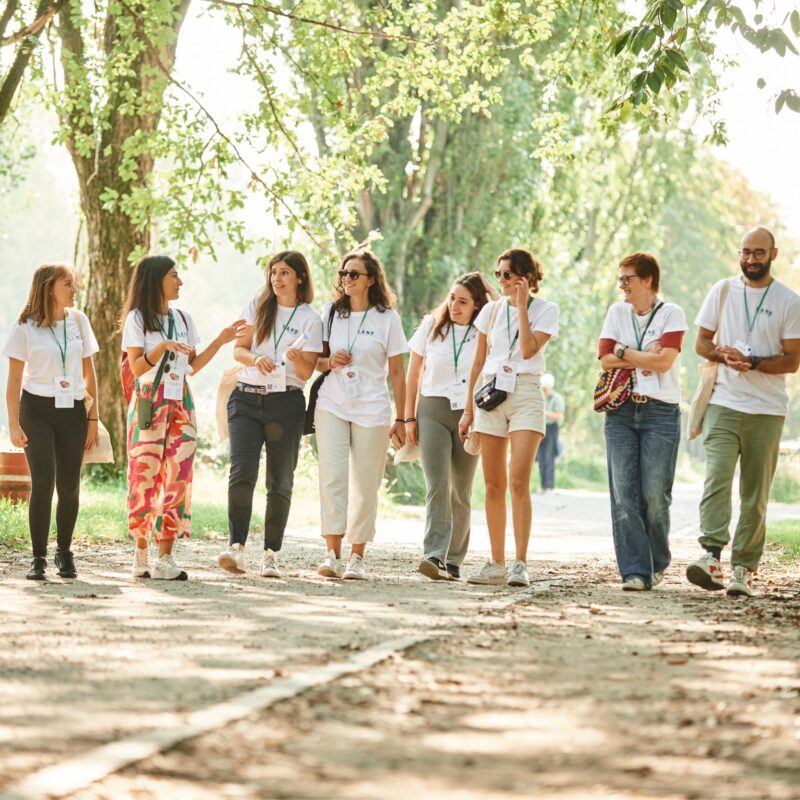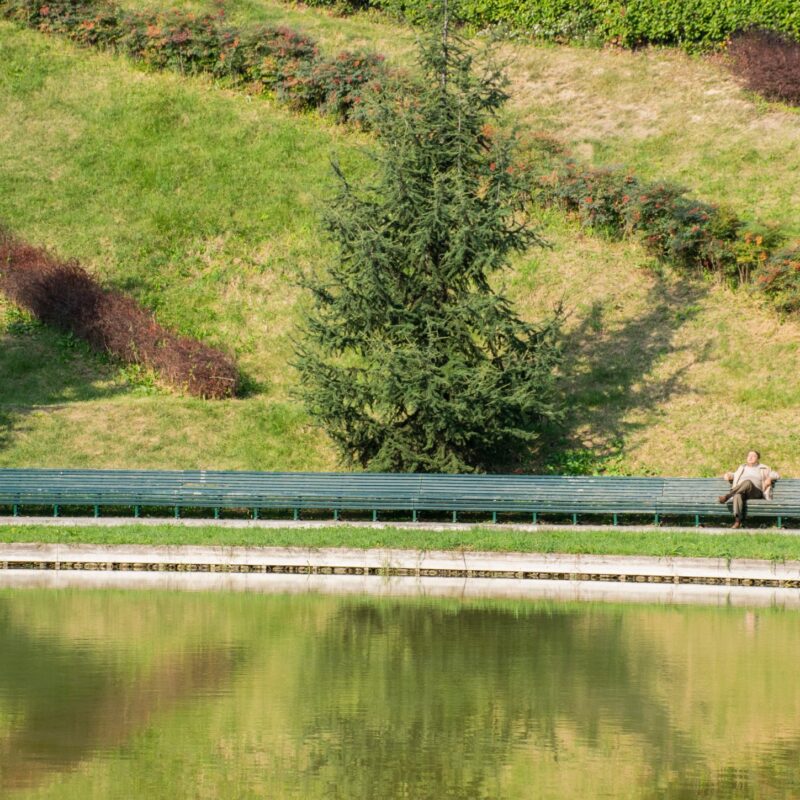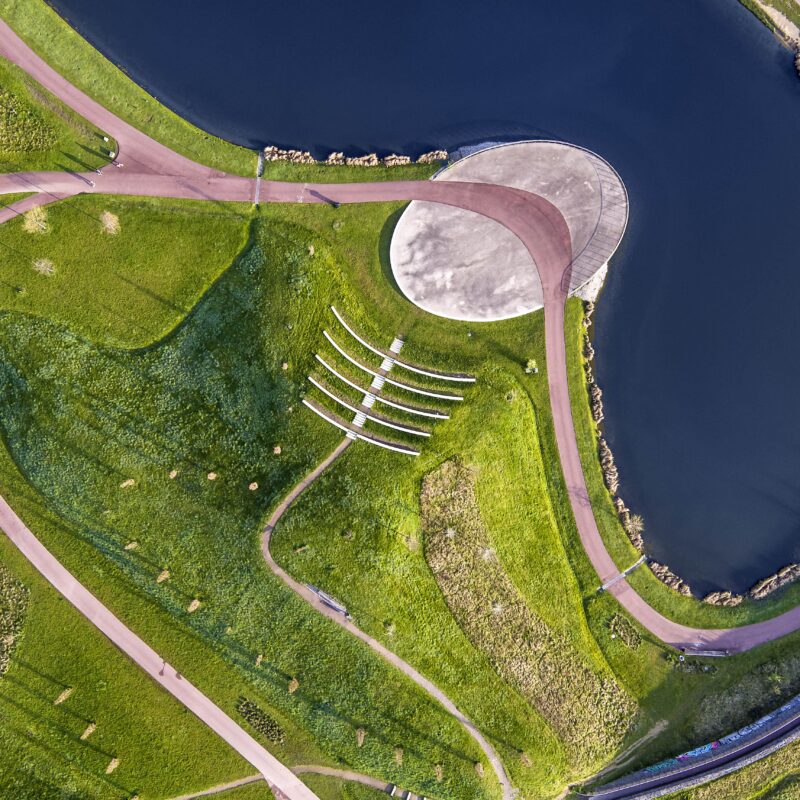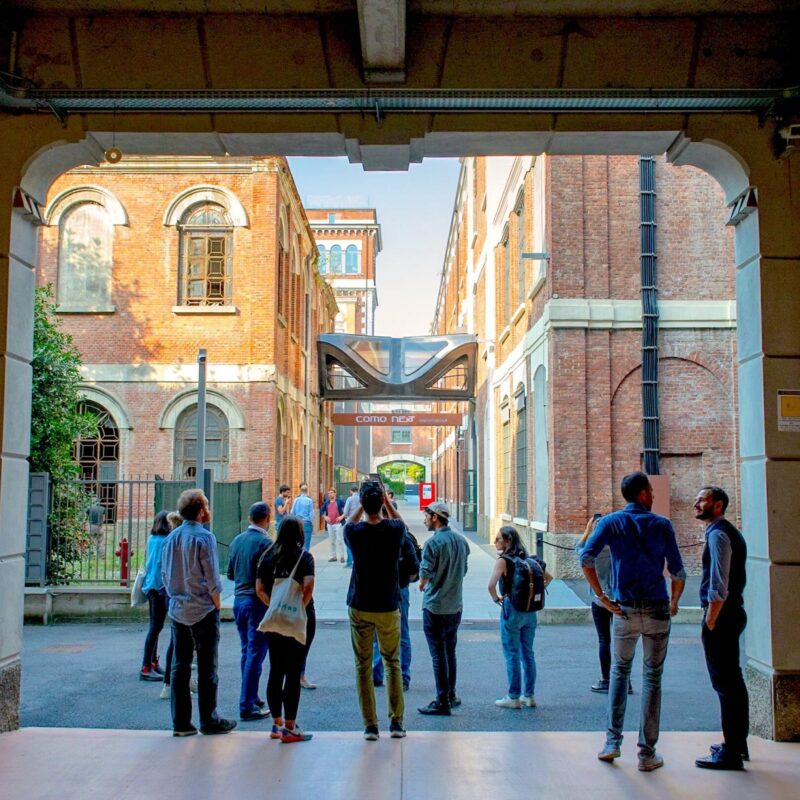
On Solid Ground
The multi-layered landscape and a new self-image in the relationship between people and nature.
By Jens Hoffmann.
LANDscape is more than landscape. This pithy play on words offers a new vision. When I first heard it, I was taking my first steps into the broad field of open space and landscape architecture. I still had a project development mentality, where landscape is understood as green space, that is as something that generates no profit, and is therefore only a secondary consideration, based more on aesthetics and getting a permit. That would soon change. Even before I started working at LAND, Andreas Kipar exhorted me, in his provocative and energetic way, “Landscape First!”, which to my ears sounded as absurd as “America First.” It didn’t take long for me to understand that landscape should not only be understood as open space and Nature, but that it uses Nature to permeate every level of society. How a multi-layered landscape is shaped by our consumer behavior, our mobility needs, the homes we want, our work spaces, our desire for everything to be as accessible as possible. This was the landscape to be designed. And maybe to be changed.
Climate disasters are making the extent and danger of climate change very real, creating a corresponding willingness to rethink things. Most people, especially the younger generations, are ready to embark on the new path of environmental transition. In most European countries, EU policies and industries are following suit. The New European Bauhaus proclaimed by Ursula von der Leyen, President of the European Commission, wants to break our old habits and develop a sustainable model for the future. This ambitious goal can justly be compared to the efforts of the Bauhaus. It too broke with the past and consciously sought new approaches to design. This spirit continues to inspire all imaginable fields of activity even now. The forerunner of this design revolution was Impressionism and its attitude to Nature. Painters turned to Nature for a better understanding of light and shadow, and they developed a new language. Subtle nuances that got lost in the studio found their way into the composition as colored shadows and vibrant brushstrokes. Just as the Impressionists looked to Nature as a way of renewing themselves as artists, so do we now seek a way back to Nature as a way of renewing our way of life.
Between City and Nature
But what confusion! A new market is opening up and almost nothing sells if it’s not labeled sustainable. And what a remarkable range of proposals. Architects, landscape designers, sociologists, politicians and entrepreneurs compete with sustainable and green philosophies. They offer solutions like streets covered with tropical plants, lush vegetation climbing up glass facades. Sometimes it looks like some sort of Mayan city hidden in the jungle. Others don’t go far enough and offer only a pale semblance of symbiosis between cities and Nature. The confusion is all to be expected as we feel our way through this period of upheaval. If we want to find solid ground again, to define a new relationship between cities and Nature, we have to turn to the multi-layered landscape described above – so we can reshape it. So we have to work both horizontally and vertically and think about both mobility and speed. Guidelines and tools for this reshaping are based on the three Ds: Decarbonization, decentralization, and digitalization.
Small Green Spaces
There’s no magic bullet that works for all cities in the same way. Each city develops its own green-blue infrastructure based on its urban configuration. In Milan, the Green Ray model can be further developed by expanding rings that follow existing major ring roads. The result is a green-blue infrastructure that resembles a spider web, forming decentralized sub-centers at the junctions. The infrastructure continues to develop vertically and horizontally from these junctions. Former traffic areas are broken up and replaced by small, attractive, green public spaces and terraces. Rainwater can seep into the surface and soak into the ground. During warm days, it slowly evaporates, humidifying and cooling the air in open spaces. The result is places with reduced traffic, clean air, clean water, and healthy soil. Places that encourage biodiversity. Places whose energy flows into neighboring streets. These green, decentralized sub-centers are creating an urban open space that offers people a new quality of life. This redesigned urban open space reflects a new self-image, which citizens demand as a minimum benchmark and which thus affects all levels of society. And the play on words that LANDscape is more than landscape becomes both an obligation and a vision of the future for the LAND international consulting and planning company and its call for Reconnecting People with Nature! Because it’s about nothing less than truly creating a new relationship between people and Nature in metropolitan areas.
Jens Hoffmann, architect, studied at Universidade Lusíada de Lisboa and Politecnico Milano and has developed projects in Europe, North America and Middle East for companies such as Foster+Partners and Westfield / URW, since June 2020 COO at LAND.
Read other Articles from this Edition






